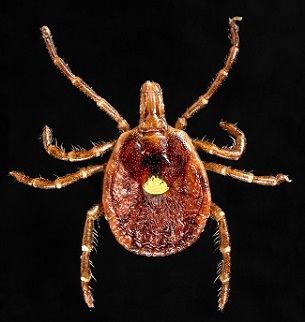Emerging Tick-borne Pathogens Highlight the Need for Constant Surveillance
Thirteen different tick species collected from people in Texas were carriers of at least 1 of 3 different pathogens.
The bacteria carried by ticks, Rickettsia, Borrelia, and Ehrlichia, in particular, cause what are referred to as tick-borne diseases. In a recently reported study published in Emerging Infectious Diseases, it was revealed that 13 different tick species collected from people living in Texas were carriers of at least 1 of these 3 pathogens.
Historically, Texas has not been among the states associated with the highest frequency of diagnoses for tick-borne diseases caused by Rickettsia, Borrelia, or Ehrlichia in this country. However, a variety of tick species capable of carrying harmful bacteria have established a presence in Texas.
The study authors provided a simple, terse, yet excellent statement regarding the nature of their work: "We report the detection of known pathogens along with bacteria of unknown pathogenicity in human-parasitizing ticks commonly found in Texas."
Lead author Elizabeth A. Mitchell from the University of North Texas Health Science Center Tick-Borne Disease Research Laboratory in the Center for Biosafety and Biosecurity suggested that "Long-term surveillance data encompassing consecutive seasons and a wide geographic range are necessary to ascertain disease transmission risks associated temporally or geographically with established or emerging tick-borne pathogens and their vectors." With that rationale in mind, the study was conducted to determine which kinds of ticks collected in Texas between October 1, 2008, and September 30, 2014 were carriers of 1 or more of the aforementioned bacterial pathogens.
When addressing the results, the study authors stated, "Continued monitoring in low-risk areas provides data regarding the presence of potential emerging pathogens and vectors not yet commonly identified, which could pose unidentified threats to public health." This assertion was clearly borne out by the study data, which revealed a voluminous amount of fascinating microbiological data.
The study analyzed 1,112 ticks, 1,062 of which originated in Texas. The DNA from every one of these ticks was tested for the presence of Rickettsia, Borrelia, and Ehrlichia spp using PCR. Thirteen different species of ticks were present in the total study sample. The majority were Amblyomma americanum (55.7%) (see picture).
Amblyomma americanum

Other species identified in this study included Dermacentor variabilis (15.0%), Rhipicephalus sanguineus (13.0%), Ixodes scapularis (5.6%), A. maculatum (5.4%), and A. cajennense (2.9%). Rickettsia, Borrelia, or Ehrlichia bacterial DNA was present in almost one quarter (23.3%) of the ticks originating in Texas.
In terms of more fine-grained microbiological data, the authors reported that most of the identified tick species belonged to spotted fever group rickettsiae (SFGR). Of all 13 tick species indentified in the study, A. americanum was the tick species found to be the most frequent carrier of SFGRs.
Furthermore, the most frequently occurring SFGR sequences were 100% identical to Candidatus Rickettsia amblyommii rompA. Both A. americanum and A. cajennense ticks harbored Candidatus R. amblyommii with prevalence rates of 30.3% and 32.3%, respectively.
A surprising amount of additional, very fine-grained data pertaining to additional sequence similarities and proposed phylogenic relationships between tick bacterial pathogens based on geographic region are also reported.
When summarizing this wealth of information, the study authors stated, "Our findings underscore the importance of better characterization and continued surveillance of the frequency and distribution of tick species and the bacterial agents they carry." The study data certainly support such a recommendation.
AMBLYOMMA AMERICANUM IMAGE SOURCE: CDC/ Dr. Amanda Loftis, Dr. William Nicholson, Dr. Will Reeves, Dr. Chris Paddock
William Perlman, PhD, CMPP is a former research scientist currently working as a medical/scientific content development specialist. He earned his BA in Psychology from Johns Hopkins University, his PhD in Neuroscience at UCLA, and completed three years of postdoctoral fellowship in the Neuropathology Section of the Clinical Brain Disorders Branch of the National Institute of Mental Health.
